You should understand the details and function of fleet fuel cards for small businesses before choosing the right type for your fleet. We personally analyzed fuel cards and did all the research for you. The answers to some questions on fuel cards, as well as how they work, are given below.
Studies have found that 95.2% is spent on operating expenses for every dollar earned by the average American trucking company. That means leaving only 4.8 cents of profit.
And you’ve probably heard many things from people in the transportation industry about fuel cards. However, they are not just for diesel fuel, trucking companies, and fleets.
What are Fuel Card?
Fuel cards are specialized credit cards designed for fuel-related purchases. However, fuel cards for fleets serve as a comprehensive solution for fleet management by providing a secure and efficient payment mechanism that goes beyond credit card capabilities.
These cards can be used not only for purchasing fuel but also for making additional purchases such as toll payments, lubricants, and carwashes. Fuel cards for trucks can be assigned to specific drivers or vehicles, and spending limits can be set to control fuel expenses and ensure that the fuel budget stays within limits.
With fuel cards for fleets, the fuel purchasing process is streamlined, saving time and reducing administrative burden. Fuel cards also offer features like detailed fuel consumption data, daily spending caps, and options for additional purchases, making them an essential tool for managing fleet expenses.
Who Uses Fuel Cards?
There are different types of users of fuel cards. In commercial trucking users include: commercial carriers, less-than-truckload carriers, private companies, and owner-operators. These specialized cards cater to carriers of all sizes, from single rigs to those operating hundreds of vehicles.
You may be asking yourself, aren’t fuel cards for truck drivers? The answer is NO! Other businesses that use fuel and/or fleet cards include delivery vehicles and fleets; construction vehicles and equipment; governments and enterprises like fire trucks, ambulances, and municipal vehicles and equipment; military vehicles and equipment; taxis, Ubers, and other people movers like buses and transfer services.
How Do I Use My Fleet Fuel Card?
*Note that the steps may vary by card provider and fuel station. Check the instructions and policies provided by the card provider for a smooth experience. But to use a fleet fuel card in general, these are the steps:
- Choose a fuel station that accepts your card using the online locator or mobile app provided by your fuel card provider.
- Swipe the card or enter card information at the pump or point of sale.
- Enter mileage or VIN to link the fuel purchase with the vehicle.
- Fuel up and select any additional services allowed by your card.
- If required by your company, keep the receipt or take a photo for tracking and reimbursement purposes.
You can then monitor usage and expenses through the online portal or mobile app provided by the card provider.
The fuel cards typically work just like any credit or debit card, some even come with the exception that, with them, you can buy only fuel, while others include other goods related to motoring. And just like credit cards, the fleet company is directly charged, usually at the end of the month.
Where Can I Use A Fleet Card?
Fuel card issuers use different networks of fuel stations and service providers. Some fuel cards are limited to one gas station or to a supplier’s network of stations. Others allow you to use any gas station or service center, but may not provide as good of discounts or rewards. Some even allow use at restaurants and supermarkets!
Some fuel cards come with fees, while others don’t. And some cards do not charge interest on purchases but come with their own rules, restrictions, and or fees. Some fuel card providers not only offer fuel discounts for truckers, but they also may include discounts for related services like auto parts and accessories, washes, maintenance, and repairs, while some are restricted to strictly fuel purchases.
When choosing a fuel or fleet card, keep in mind the size of the network and restrictions on use.
What Are The Best Fuel Cards For Truckers?
Using fleet fuel cards for trucks can assist you in better managing the expenses associated with upgrading your fleet. Additionally, they can enable you to maintain better control over your workforce by providing you with detailed reports of purchases made by each driver or vehicle in your fleet. It is important to note that not all fuel cards for trucks are compatible with every gas station, and even if a particular fuel card offers great discounts, it may not be the best option for your fleet based on other features or fees.
Many companies continue to invest in fuel cards for trucks. In fact, roughly 73% of small fleet companies utilize fuel cards for small fleets in order to reduce fuel expenditures.
If you are interested in obtaining fuel cards for truckers, now is an opportune moment to do so, particularly for new businesses. After analyzing various options, we have identified some of the best fuel cards for trucks available for you to choose from, including the Motive Card, which is our #1 pick for its comprehensive benefits and seamless integration with fleet management systems.
1. Motive Card
The Motive Card has rapidly gained traction among fleets of various sizes due to its comprehensive range of benefits, making it a strong contender for one of the best fuel cards for small businesses.
It’s growing popularity, benefits, and discounts offered are some of the reasons it’s our #1 pick. We also love the seamless integration into the Motive fleet management system. More than just a fuel card, the Motive Card offers a suite of management tools designed to help fleet managers monitor and optimize their operations with greater ease and efficiency.
With Motive, you’ll find integrated fleet management and spend management working together and providing shared data and visibility which unlock savings and improve productivity.
Accepted at an extensive network of fuel stations, the Motive Card provides convenience and flexibility for fleets on the move. Attractive rebate rates make this fuel card an excellent choice for businesses seeking to reduce costs while maintaining access to valuable resources and management solutions.
The Motive Card also offers additional services and benefits like savings on tires, labor, maintenance, rental insurance, travel assistance, and more.
Check out some of the benefits:
-
No application fee.
-
No membership fee.
-
No transaction fees.
-
No minimums required.
-
Tier 1 savings averaging 20+ cents per gallon at over 4,000 partner locations (and growing), including Love’s, TA, and Casey’s.
-
Spend, fraud and geofence controls.
- Comprehensive management tools
- Accepted at a wide range of fuel stations
- Attractive rebate rates
- Provide real-time reporting
- Might have a learning curve for using management tools
Motive rolled out its Cashback Bundle, offering up to 2.5% cashback on all purchases during the first year, then 1.5% ongoing. The Motive Card also now integrates AI-powered fraud detection, which flags suspicious purchases by cross-referencing vehicle location, fuel volume vs. tank capacity, and more — automatically blocking them in real time. Fleets tell us this has prevented thousands in fraud, making it one of the smartest fuel card for owner operators this year.
2. WEX Fleet FlexCard
More than 400,000 fleet companies are using WEX fuel cards for truckers. That’s an impressive figure. This popularity is partly due to their flexible rebate program offering up to 15¢ per gallon at in-network fuel stations depending on your fuel volume and payment terms.
Previously, WEX offered a flat 3¢ rebate for low-volume users, but now rebates are more customized based on monthly fuel usage, making it more competitive for fleets of different sizes.
WEX provides a full fleet fuel card management reporting package, allowing you to track every purchase and get detailed reports for expenses, IFTA tax reporting, and driver behavior.
Their mobile app makes it easy to find nearby stations that accept WEX cards, which now covers 95% of all U.S. fuel stations, a major improvement over earlier years.
What sets WEX apart today is its enhanced telematics integration with GPS tracking tools and route optimization, allowing fleet owners to not only monitor fuel spend but also improve efficiency across their routes.
Many fleets also appreciate that WEX now offers 24/7 U.S.-based customer support to help with card issues, fraud alerts, and account management.
- Suitable for fleets of all sizes
- Up to 15¢ per gallon in rebates
- Accepted at 95% of U.S. fuel stations
- Robust reporting and telematics integration
- 24/7 U.S.-based customer support
- Some users report high fees for certain advanced services
- Rebate levels may vary based on fleet size and payment terms
3. AtoB Fuel Card
Honestly, AtoB is one of the newer cards that really caught my attention during research this year. It’s quickly becoming a favorite for fleets that want both flexibility and simplicity, especially for owner-operators like myself looking to save time and money.
What makes AtoB stand out is how much control it gives you. You can assign cards to specific drivers or vehicles, set spending limits, and monitor every transaction in real-time from their dashboard. I personally appreciate this level of control, it means no more surprises on my fuel bill.
In 2025, they’ve expanded their acceptance too, now covering over 99% of gas stations nationwide, including major brands like Shell, Chevron, and Pilot. That’s been a game-changer for many small fleet owners who want to avoid fueling restrictions.
And here’s something I found pretty cool: AtoB doesn’t stop at fuel. It also offers discounts on repairs, maintenance, tires, towing, and even insurance through their partners. You’re not just getting a fuel card—you’re basically getting a fleet savings program.
They’ve also added AI-driven expense insights, which flag unusual transactions automatically, super handy if you’re tracking multiple drivers.
💡 Pro tip: They now offer instant virtual cards you can use right away after approval, no waiting around for physical cards to arrive in the mail. You can learn more about AtoB fuel card here.
- Instant virtual cards available
- Customizable spending controls
- Accepted at 99%+ of gas stations
- Competitive fuel rebates and savings on services
- Advanced tracking and reporting for improved fleet management
- May require familiarization with the platform for optimal use
- Some services may vary by location
4. Fuelman Universal Cards
Fuelman is still one of the most customizable fuel card providers in the market, and in my research, I found that they’ve expanded their options even more in 2025. They now offer six card programs, each tailored for different business sizes and spending needs, making it easier for owner-operators and large fleets alike to find a match.
Their Advantage Card still provides solid rebates, up to 6¢ per gallon at participating gas stations, which is great for smaller fleets. But what really caught my eye was their Platinum Mastercard option, which now offers flexible cash pricing along with rebates and works like a prepaid card for added control.
For those concerned about security, Fuelman has improved its fraud protection tools this year. They’ve added real-time transaction alerts and location-based spending controls to prevent unauthorized use, something I really appreciate in today’s climate of rising fraud risks.
Another thing I liked? Their dashboard has become more intuitive, allowing me to monitor fuel usage, spending, and savings across multiple drivers and locations.
However, some users still report that their mobile app feels a little clunky, and their coverage, while extensive, still has a few weak spots in remote regions of the U.S.
💡 Quick tip: Fuelman cards now integrate with popular fleet management software like Verizon Connect and Samsara, which can make expense tracking much easier if you’re already using these platforms.
- Multiple card options for different fleet sizes
- Good coast-to-coast compatible gas stations
- Plenty of fuel cards for trucks to choose from
- Enhanced fraud protection tools
- Works with major fleet software
- A bit unreliable App
- Some rural areas have limited coverage
Check out more details about the Fuelman card here:
5. ExxonMobil Business Fleet card
The ExxonMobil Business Fleet Card still stands strong as a simple, no-frills fuel card that’s ideal for small fleets, especially those operating along the East Coast.
In 2025, they continue offering the 10¢ per gallon rebate for the first six months, followed by a standard 6¢ per gallon rebate afterward. While it’s not the highest rebate out there, what I personally appreciate about ExxonMobil is the lack of monthly fees, that alone can make a huge difference for owner-operators watching every penny.
During my research, I noticed that this card has remained consistent with its no-surprise fee policy, and users also appreciate its clean, easy-to-understand billing process.
However, coverage remains their biggest downside. If your fleet frequently travels across the Midwest or West Coast, you’ll find this card’s utility drops off significantly since ExxonMobil’s gas station network is still concentrated in the East and Southeast.
- Compatibility with Great East Coast gas station
- No monthly overheads charges
- Robust back-office suite
- Sketchy Interstate coverage
- Modest rebate after introductory period
6. Shell Fleet Navigator Card
It is the perfect fleet card for gas station coverage to use Shell Fleet Navigator fuel cards for trucks.
The fuel card is accepted at about 95% of U.S. gas stations; as a result, truck drivers will never be concerned about running dry.
Fleets now have access to this fuel card. As a result of Shell’s partnership with Jiffy Lube, fuel card holders can take advantage of incentives on vehicle supplies.
The company offers an excellent back-office suite to help fleet managers reach their drivers in addition to their competitive rebate rates.
You can set purchase limits and customize your reports to reflect the data you would like to see if you want to tighten your fuel expenditures. Even opportunities to save cash will be flagged up.
- Set a variety of limits
- 24/7 customer support service
- Discounts available at Jiffy Lube locations
- The system data points out opportunities to save
- Differences Fees and rebate apply
- Lower Rebate rate
7. BP Fleet Gas Cards
BP provides three cards to help fleets companies of all sizes to manage fuel costs.
The company offers outstanding fuel cards for fleets that operate in the East, but their Universal Card provides sufficient coverage if you move further afield. Finding any one of the 7,500 BP fuel stations on your pc is easy; however, users ought to be aware that BP currently does not have any locator app.
And while there are third-party apps that you can use, we cannot vouch for their reliability. In addition, BP’s coverage on the west side of the Mississippi may be unpredictable, despite having numerous gas stations on both coasts.
- No annual fee
- 25cent/gallon gas rebate for the first 90 days
- Service is not available in 14 states (West and Midwest)
- Mobile gas station locator app is not available
8. Coast Card
The Coast Card has quickly gained ground as a favorite among owner-operators and small-to-mid-sized fleets, and after diving deep into user feedback, I can see why it’s becoming a go-to pick.
What sets this card apart in 2025? Simplicity and flexibility.
I personally like how Coast doesn’t nickel-and-dime you. They don’t charge per-gallon fees, transaction fees, portal access fees, or hidden surcharges—something that can be a game-changer for smaller operations. No personal guarantee is required either, which is rare for fleet cards.
Besides fuel savings, you can also use it for toll payments and service station purchases—a bonus if your fleet frequently drives toll-heavy routes.
They’re accepted at 30,000+ stations across the country. Their rebate structure remains competitive, offering:
- 4¢–10¢ per gallon rebate on fuel purchases, depending on the station.
- 1% rebate on all non-fuel purchases.
- 10% discounts at partners like PepBoys and Jiffy Lube.
One thing I appreciate after reviewing their user portal is how easy it is to track spending by driver and vehicle, no complicated tools to learn. However, if you’re looking for deep analytics or advanced fleet management integrations, Coast might not have as many bells and whistles as others like Motive or WEX.
- Simple, fee-free pricing structure
- No personal guarantee required
- Allows toll and service station purchases
- Easy-to-use dashboard for tracking
- Accepted at 30,000+ fuel stations
- Consistent rebates and discounts
- Lacks advanced fleet management tools
- Fuel rebates may not be as high as others in certain regions
Fuel Cards That Focus on Security & Spend Management
Fuel cards aren’t just about savings anymore, leading options now include security and spend management tools to protect your business.
For instance, Motive’s platform now provides a Savings Finder feature that shows drivers nearby stations offering the best rates, potentially saving fleets thousands annually. Coast also provides real-time spend controls and fraud detection alerts, ensuring every dollar is accounted for and stopping misuse before it happens.
Personally, I think these tools are becoming essential, especially for owner-operators juggling multiple costs.
When comparing cards, I recommend not just looking at rebates, but also at security features, real-time spend tracking, and fraud prevention tools, especially helpful for owner-operators or small fleets looking for smarter control.
Do Fuel Cards Save You Money?
Some fuel cards for fleets offer rebates; however, that’s not the only way they can assist you in reducing the cost of fuel.
Below are other ways in which fuel cards help your fleet company.
Specify Locations and Set Limits
Facilitates Fuel savings and Efficient Driving
Many fuel cards for fleets offer comprehensive management reporting, and this allows fleet managers to identify unreliable drivers, expensive locations and poor choices of routes.
Driver performance can be compared across your company and drivers will be able to drive more efficiently as well.
Findings have already demonstrated that driving more efficiently can prove beneficial for fuel economy ranging from 10 to 40%.
Reduces The Chances of Expense Fraud
In this way, employees are less likely to claim private mileage as a business expense.
Fuel Accountability
ELDs That Include Fuel Cards
1) Motive ELD
The Motive ELD system offers seamless integration with the Motive Card, providing an all-in-one solution for fleet managers. The integration helps track fuel usage, monitor driver behavior, and manage overall fleet expenses.
The Motive ELD platform also offers advanced analytics and reporting to help identify areas for improvement and optimize fleet operations.
2) GPS Trackit
GPS Trackit has provided integration of fuel cards for fleets, and that is in addition to its vehicle tracking system. In addition to fleet management, this provider’s flagship product helps companies manage their vehicles more effectively. The integration of the fuel card increases this capacity.
With this system, the Fleet pays for fuel using fuel cards for trucks at participating gas stations.
GPS Trackit fuel card function, much like a credit card, however, comes with an additional fuel purchase report which can notify dispatchers and fleet managers of possible fuel theft.
3) Verizon Connect
This ELD provider integrates the fuel card into its ELD solution. The main purpose of this feature is to enable you to track the fuel costs of your truck.
And this is done by collecting reports such as a report acquired from fuel purchased. These reports help fleet managers to understand how the fuel funds in the fleet are spent.
Detecting specific cases of fuel cards being used on vehicles that weren’t at the fuel station will alert authorities.
The report on fuel efficiency would help you figure out which trucks are working efficiently and which vehicles do not comply with the requirements for efficiency.
4) Geotab
Fuel BI provides full fuel card integration for the Geotab platform as an add-in or web application. And this displays all the primary fuel KPIs
in the dashboard of your company and presents the fuel expenditures on a map. During fleet activities, over 14 different patterns are used to assign fuel cards to vehicles.
5) Fleetistics
Fleetistics fleet fuel cards for trucks offer an easy solution for fleet managers to control all the fuel costs associated with the vehicle through a convenient program. Fleet managers will have access to comprehensive gallon reports, fuel type, price per gallon, and nonfuel purchases with this solution.
Fleetistics can then integrate more insight into customer GPS data. Fleetistics receives data from WEX, and custom views of data are merged with GPS data.
WEX data is shown in the Fleetistics Fleet Management Portal for convenience. Fleetistics also combines fuel data with WEX data to provide new insights into fuel use.
6) Simple Truck ELD
The Simple Truck ELD is designed so that motor carriers, as well as drivers, can comply with HOS requirements effectively. In this way, carriers can capture HOS information and ensure compliance with HOS best by using ELDs and relevant support systems.Vehicle Engine data is shared through integral synchronization with the ELD. The ELD is also tamper-resistant, so there will be no unauthorized manipulation of the data collected.
ELDs must meet or exceed the performance standards approved by the providers. Issued by Accutrac Capital, the Simple Truck ELD complements the features of its ELD with fuel cards for trucks, and this is another excellent solution to track fuel use.
This fuel card is a versatile payment system accepted anywhere EFS cards are accepted at more than 16,000 truck stops across North America.
Which Fuel Card is Right for My Fleet?
Choosing the appropriate fuel card for your fleet can be challenging due to the increasing number of options available each year, such as the recently added Motive Card and Coast Card. It is important to select the card that offers the most advantageous benefits and features for your business’s specific needs.
Fortunately, regardless of the size of your fleet, whether it is small or medium-sized, there are fleet fuel cards available that cater to your requirements.
Frequently Asked Questions (FAQs)
Are fuel cards secure?
Yes, fuel cards typically offer several security features like:
- PINs: Drivers require a personal identification number (PIN) to activate the card at the pump, preventing unauthorized use.
- Real-time transaction monitoring: Most providers offer real-time alerts for unusual spending patterns, allowing you to identify potential fraud quickly.
- Lost and stolen card reporting: You can easily report lost or stolen cards, and providers typically freeze the account immediately to prevent further misuse.
What happens if a card is lost or stolen?
Immediately report lost or stolen cards to your fuel card provider. They will deactivate the card and issue a replacement. You may be liable for unauthorized transactions before reporting the loss, so act promptly.
What are the tax implications of using fuel cards?
Fuel card transactions are generally treated like regular fuel purchases for tax purposes. However, it’s important to consult with your tax advisor for specific guidance on record-keeping and potential tax benefits associated with fuel card usage.
Can I use fuel cards for other purchases?
Some fuel cards allow purchases beyond fuel, such as:
Maintenance and repairs: Authorized service locations may accept the card for oil changes, tire repairs, and other maintenance services.
Tolls and car washes: Certain programs offer the convenience of using the card for tolls and car washes at participating locations.
However, always check your specific card program details and spending limits for authorized purchases outside of fuel.
How do you get the best fuel cards for small businesses?
Identifying the best fuel cards for small businesses requires considering your specific needs and priorities. Here are some key factors to consider:
- Network coverage: Ensure the card is accepted at stations convenient for your drivers’ routes.
- Fees: Compare annual fees, per-gallon fees, and transaction fees to find a cost-effective option.
- Rebates and discounts: Evaluate the types of discounts offered and how they align with your fuel consumption patterns.
- Management tools: Consider features like spending limits, reports, and integration with other systems.
Putting It All Together
For fleet managers, drivers, fleet owners as well owner-operators, fuel cards make life so much easier. Drivers would no longer be required to pay cash for fuel, save any receipts, or fill out claim forms for expenses. Fuel purchase data is automatically logged into an online fleet management portal with a detailed tax-compliant invoice. Analyzing each receipt is a tedious and time-consuming task; however, this will be a thing of the past with fuel cards for fleets. And thus saving fleet time when it comes to reclaiming VAT.
Fuel and fleet maintenance cards are indispensable tools for fleet managers, drivers, fleet owners, and owner-operators as they greatly simplify their lives. No longer will drivers need to pay for fuel with cash, keep receipts, or complete expense claim forms. Instead, fuel purchase data is automatically recorded in an online fleet management portal, providing a detailed tax-compliant invoice.
Analyzing and keeping receipts can be an arduous and time-consuming task. Fortunately, this is no longer necessary with the use of fuel cards for fleets. As a result, drivers and owners can save significant time with expense tracking and IFTA reporting. We assist you in finding the best eld devices for fleets that provide you with the best coverage across your business routes.
So all you have to do is fill out our free consultation form with a few details, and we will help you to find the best suitable eld devices that suit your business needs.
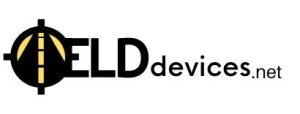




















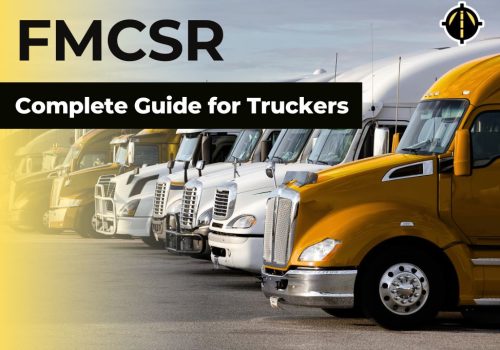
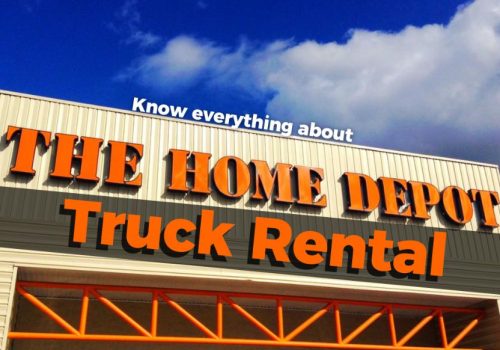
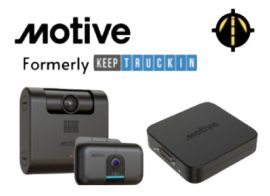
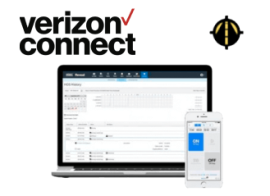


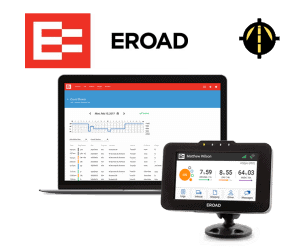
 Answer 5 simple questions to request a
Answer 5 simple questions to request a